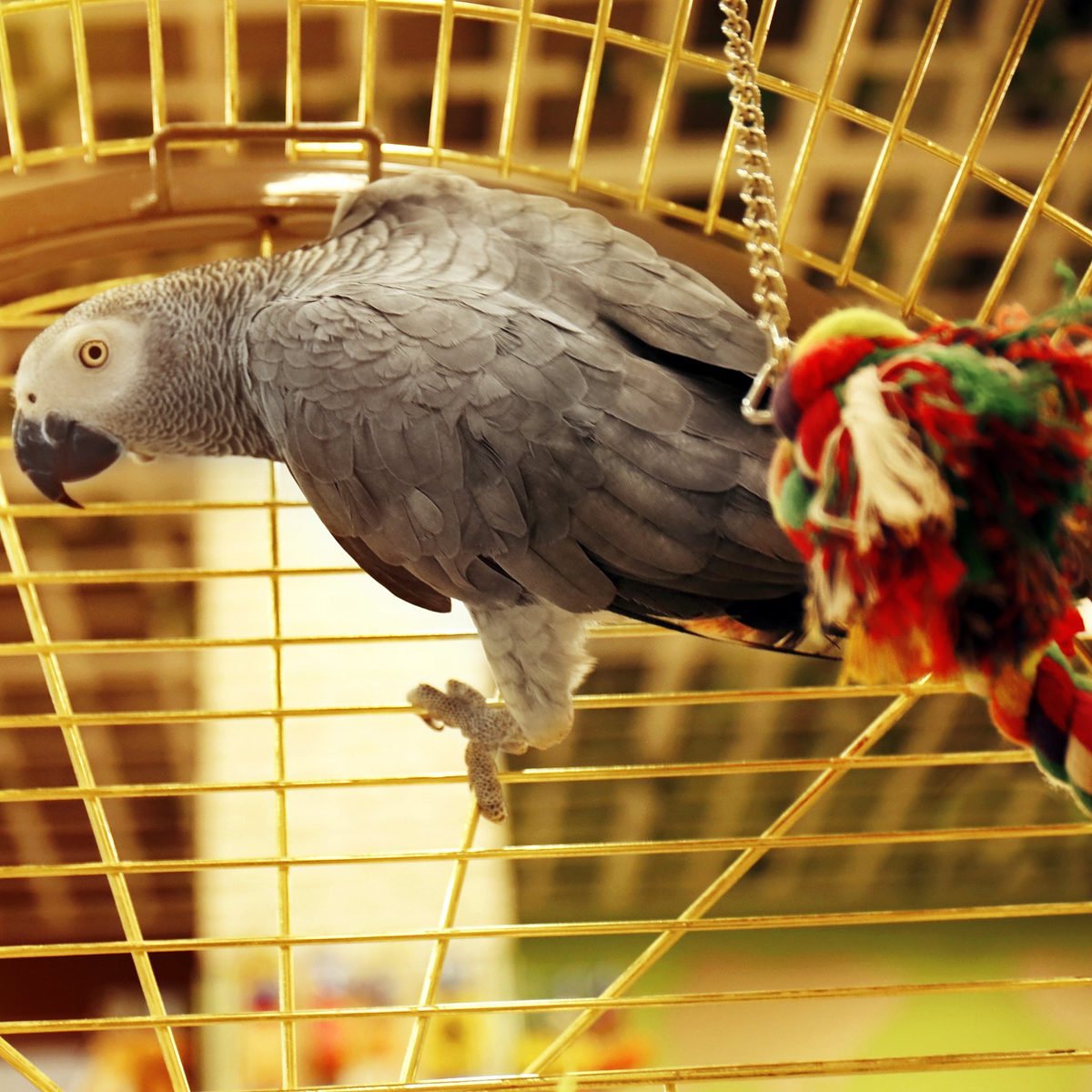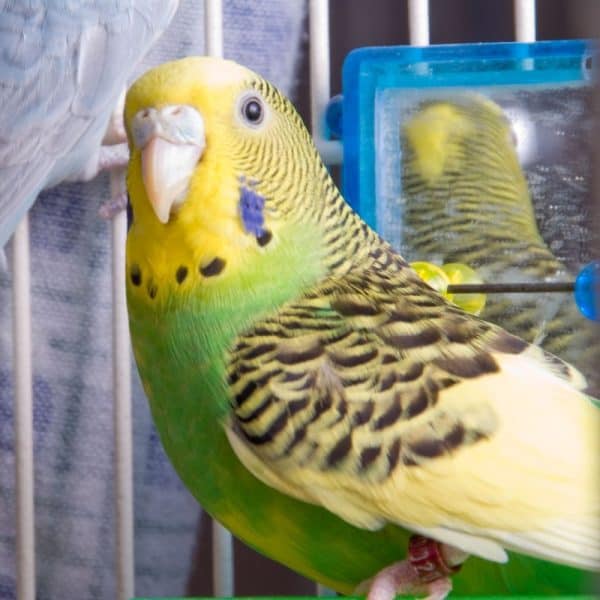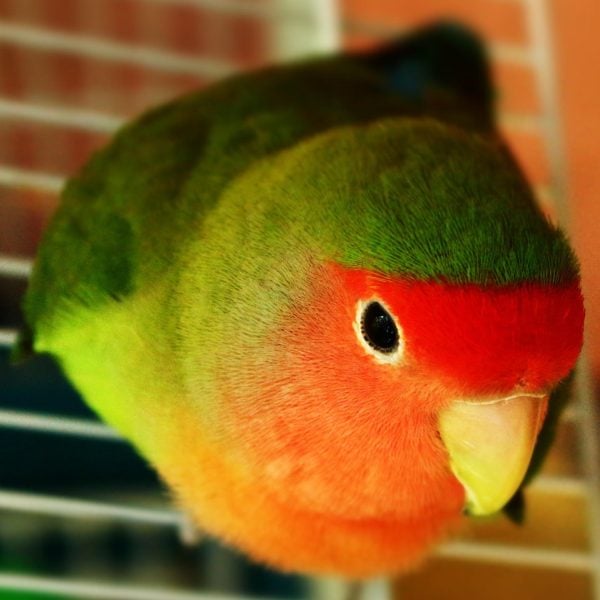
Can I Always Keep an African Gray Parrot in a Cage That is Placed in the Living Room?
Last Updated on by Catherine Tobsing
I’m going to interpret this as a cage placement question.
The answer is not straightforward.
Parrots like privacy.
We talk a lot about the birdcage canopy effect of lining the top third of your bird’s cage with so many toys that you can not see the bird.
This gives them a sense of security in that they are not easily seen all the time.
You have some sort of window covering in your bedroom, right?
That said it’s always best to have a bird cage in a corner with at least the back and hopefully one side of the cage against a wall.
Think about this, if you are about to be a new bird companion and ordering your first birdcage.
When assembling the birdcage you may have a choice on which side of the cage the feeder dishes are, so you’ll want to take that into consideration.
Windows can be a parrot’s friend or foe.
All the light streaming in through the window although lovely and bright doesn’t benefit your bird all that much.
All the UVA and UVB rays are filtered out by household glass, and light cycles are much more important than bright, sunny days anyway.
The reason is that most parrots have very defined instinctual expectations of an equatorial light cycle which is closer to 12 hours of light and 12 hours of darkness.
Here in North America the light cycles are constantly changing, upsetting both birds and humans alike. (Think SAD disease).
We address this by introducing artificial light, preferably a full spectrum light, no higher than 6 inches over a birdcage, and putting it on a timer usually set for 12 hours on and 12 hours off.
This helps keep your bird’s circadian rhythm synchronized and can fix problems from behavioral issues to chronic egg laying – which is a whole other topic.
Some living rooms are just that, “living” rooms.
If there are social areas for the home’s residents, all the better because parrots are social animals.
However if the living room is never entered by humans in general and the bird becomes isolated, you may see the beginning of negative behavioral issues like self-mutilation (feather plucking).
An African grey is a relatively big bird and you don’t mention if you have a TAG or CAG but either way you can expect a mess.
If the living room is carpeted you’ll want to introduce a very large office chair mat or a piece of sheet linoleum will work just fine under the bird cage.
Either way, a more solid surface on top of the carpet will make it easier to roll the cage for cleaning purposes.
If you have hardwood floors the same holds true.
I add a small 18″ x 27″ floormat for lack of a better term in front of the cage, under the door.
I buy them for a buck or two at dollar stores.
Peaches spends much of her time on a Booda Comfy rope perch on top of her cage or she will get something to eat out of her food dish and bring it out onto her horizontal landing door.
The 60% or 70% of the refuse she creates when eating an almond or a Nutri-berrie falls onto this floor mat.
Every day or two I pick it up and empty the contents into our Simply Human stainless pedal-activated covered kitchen garbage bin.
My point is that if the birdcage is in the living room, so is the bird’s mess.
If you and/or your significant other can deal with that, great!
If having a living room floor and walls filled with shards of nut shells, seed husks, grey feathers and food particulate from any number of fresh produce sources is an acceptable environment, the living room would be the ideal place to have your African grey parrot cage.
If your living room is the only place where television is watched late into the night, you’ll want to consider an alternate “sleeping cage” configuration for the bird so it can get its full 10 or 12 hours of needed sleep, in another room.
African grey parrots are very social.
If you have company, entertain on a regular basis or just enjoy the neighbor’s company every day of the week, expect your African grey parrot to insist on being part of the social interactions – in the living room.
If you feel that having to deal with your bird along with your friends is too much of a burden, the living room might not be the best place to house your FID (Feathered Kid).
Circling back to the original question, you can see the layers of complexity this question begs.
In a perfect world, with the living being the center of social activity in the home, it would be an ideal environment for a very social animal like an African grey parrot.
As a human, it’s up to you to determine what trade-offs you’re willing to make in order to have this bird in a particular room let alone your home.
Written by Mitch Rezman
Approved by Catherine Tobsing
Author Profile
Latest entries
 The Traveling BirdJune 26, 2025Can You Name 5 Parrot Species That Are Living Wild in the USA?
The Traveling BirdJune 26, 2025Can You Name 5 Parrot Species That Are Living Wild in the USA? Bird BehaviorJune 26, 2025How is it Parrots Are Problem Solvers Social Animals and Even Use Tools?
Bird BehaviorJune 26, 2025How is it Parrots Are Problem Solvers Social Animals and Even Use Tools? Bird & Parrot AnatomyJune 25, 2025How a Tiny Chemical Modification Makes Parrots Nature’s Living Paintings
Bird & Parrot AnatomyJune 25, 2025How a Tiny Chemical Modification Makes Parrots Nature’s Living Paintings PigeonsJune 20, 2025How Do Parrots Thrive in Cities Outside Their Native Habitats?
PigeonsJune 20, 2025How Do Parrots Thrive in Cities Outside Their Native Habitats?
This Post Has One Comment
Leave a Reply
You must be logged in to post a comment.



Peg Gilchrist
23 Oct 2022Thank you Mitch, I loved this article. My little GGC, Sir Lancelot is also very social and does not like being put to bed when the sun goes down, he complains for ages after. He is also awake with the sunrise and let’s us know too. I love the little devil though. LOL! X